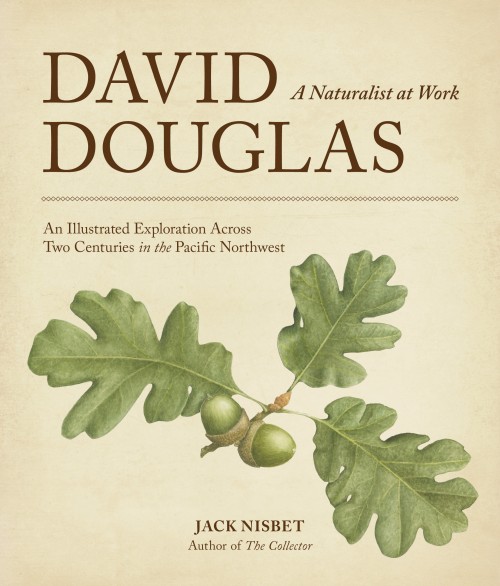David Douglas: A Naturalist at Work

Spokane-based author, naturalist and teacher Jack Nisbet is fascinated with the natural and cultural history of the Pacific Northwest. He is one the most gifted interpreters of the wild bounty that our corner of the country possesses, and also has gone to great lengths to tell the stories of the first European explorers to encounter this native endowment.
His books include Source of the River: Tracking David Thompson Across Western North America, The Collector: David Douglas and the Natural History of the Northwest and The Mapmaker’s Eye: David Thompson on the Columbia Plateau. Each volume retraces the steps of passionate, hardy individuals who made the first strides in understanding the landscape, native people, wildlife and botany of Washington State.
Douglas, the subject of his latest book David Douglas: A Naturalist at Work, landed at the mouth of the Columbia River in the in the spring of 1825, charged by the London Horticultural Society, with blessings from the Hudson’s Bay Company, to learn all he could about the Pacific Northwest ‘s botanical treasures. He had previously pored over the accounts of Lewis and Clark, Vancouver, Mackenzie, Thompson and other explorers and was uniquely adept at scientifically surveying this “New World.” Douglas was passionate about botany and gardening, fastidious about specimen collecting and note taking, young enough to be resilient and adventurous and also wise enough to befriend the native people and others who lived close to the land. This combination of skills, pluck and strategic relationships combined to produce one of the great explorers of America.
His legacy is writ large on the landscape today by way of nomenclature: the Douglas fir, Snow Douglasia, Douglas squirrel, Douglas Brodiaea and over 80 plant and animal species with douglasii in their scientific names.

As exemplified in David Douglas: A Naturalist at Work, Nisbet’s method of interpreting regional history isn’t the usual staid recitation of dates and facts. In pursuit of bringing stories nearly 200 years old to life, he walks trails, visits reservations and tribal elders, charters pilot boats, climbs trees and wildharvests food. His studies may begin by perusing old maps or historical journals in dusty archives, but his curiosity soon has him bounding out the door and in to the same landscapes that his subjects once roamed.
His new book demonstrates, surprisingly, that the contemporary landscape he reconnoiters is in many ways not so different than what the early explorers saw.
“Although the natural and human landscapes that Douglas described have endured a turbulent two centuries since his departure, a surprising number of the species he collected can still be found near the sites where he originally saw them,” Nisbet writes, which leads him to realize that “many details of both Douglas’s and the Northwest’s larger stories remain incomplete, waiting to be teased out of clues that have been left scattered behind.” Thus begins the author’s quest.
What is noteworthy about his approach—by first reporting, then inhabiting and finally extending these early explorations—is that he actually places himself in direct lineage with the great literary naturalists of America. Nibset is a modern day John Muir, climbing to the tops of precarious fir trees to collect cones, and a contemporary of Henry David Thoreau, digging up native camas bulbs in order to taste the earthy fruits of the land.

